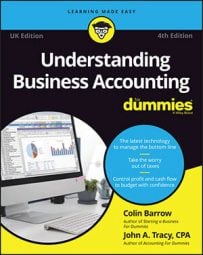One type of accounting report is a balance sheet, which is based on the accounting equation: Assets = Liabilities + Owners’ Equity. The balance sheet — also called a statement of financial condition — is a “Where do we stand at the end of the period?” type of report. The header of a balance sheet lists the date that it was prepared.
Balance sheet fundamentals
A balance sheet shows two sides of the business, which you could think of as the financial yin and yang of the business:
Assets: On one side of the balance sheet the assets of the business are listed, which are the economic resources owned and being used in the business. The asset values reported in the balance sheet are the amounts recorded when the assets were originally acquired.
An asset is written down below its historical cost when the asset has suffered a loss in value. Some assets are written up to their current fair values. Some assets have been on the books only a few weeks or a few months, so their reported historical values are current. The values for other assets are their costs when they were acquired many years ago.
Sources of assets: On the other side of the balance sheet is a breakdown of where the assets came from, or their sources. Assets come from two basically different sources: creditors and owners.
Businesses borrow money in the form of interest-bearing loans that have to be paid back at a later date, and they buy things on credit that are paid for later. So, part of total assets can be traced to creditors, which are the liabilities of a business.
Every business needs to have owners invest capital (usually money) in the business. Also, businesses retain part or all of the annual profits they make, and profit increases the total assets of the business. The total of invested capital and retained profit is called owners’ equity.
An accounting equation example
Suppose a business reports $2.5 million in total assets. The total of its liabilities, plus the capital invested by its owners, plus its retained profit, adds up to $2.5 million. Otherwise, its books would be out of balance, which means there are bookkeeping errors.
Continuing with this example, suppose that the total amount of the liabilities of the business is $1.0 million. This means that the total amount of owners’ equity in the business is $1.5 million, which equals total assets less total liabilities. The total owners’ equity may be traceable to capital invested by the owners in the business as well as profit retained in the business. The total of these two sources of owners’ equity is $1.5 million.
The financial condition of the business in this example is summarized in the following accounting equation (in millions):
$2.5 assets = $1.0 liabilities + $1.5 owners’ equity
Looking at the accounting equation, you can see why the statement of financial condition is called the balance sheet; the equal sign means the two sides balance.
Double-entry bookkeeping is based on the accounting equation — the fact that the total of assets on the one side is counterbalanced by the total of liabilities, invested capital, and retained profit on the other side. Double-entry bookkeeping means that both sides of transactions are recorded. For example, if one asset goes up, another asset goes down — or, alternatively, either a liability or owners’ equity goes up. This is the economic nature of transactions. Double-entry means two-sided, not that the transactions are recorded twice.

